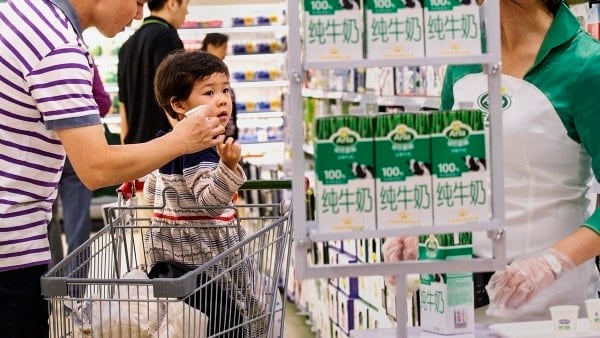This follows the publication of a recent investigation by the Associated Press, which tracked Chinese processed fish through to sale at retailers including Walmart and Aldi.
The workers, who received only a fraction of their actual pay, with the remainder going to the government in Pyongyang, were not allowed to leave their jobs, according to the probe.
Experts believe the money claimed by North Korea makes up a significant amount of its foreign currency reserves. The amount has been estimated at between US$200m and US$500m a year from the tens of thousands of workers sent to such jobs.
The AP investigation alleged that the labourers have been working at several seafood processing plants in Hunchun, close to China’s borders with North Korea and Russia.
According to Congressman Chris Smith from New Jersey, a champion of tougher enforcement, China’s seafood industry is one of 12 sectors in which enforced labour is employed in the country.
US Customs and Border Protection said in a statement that it was concerned that American customers buying seafood labelled "Caught in the USA, Processed in China" could be inadvertently subsidising forced labour.
It said it is reviewing the allegations and would "pursue all enforcement actions and prohibit goods from importation as appropriate" if it found the allegations credible.
China has said it would ban the employment of North Korean workers from next year and has already put an end to the import of seafood from the country.
"But all nations must go further and reject what is clearly a despicable practice that only serves the regime's nuclear ambitions," an NSC spokesman said.
More from China...
Chinese choose Western appeal over lactose intolerance to boost dairy market
China's US$50bn dairy market should see continuing strong growth until at least 2021, making it a key target for local and global producers.

The average 10.5% annual growth rate of the last five years is expected to increase alongside higher middle-class consumption, according to a study by Research and Markets.
Usually living in cities and developing a taste for Western foods, the growing Chinese middle class is likely to see dairy as a health segment and a good source of nutrition.
However, tempering this growth somewhat is widespread intolerance to dairy: a significant portion of the population is lactose-intolerant, and experiences adverse effects from dairy products.
This could prompt a growing preference for non-dairy products like soy milk at some point, but for now, Chinese consumers will still continue to increase their milk consumption as the middle class expands, the study found.
Though it is one of the smaller markets in the global dairy sector, in terms of per-capita expenditure, China’s rapid economic development bodes well for consumer goods producers, and especially ones which produce products associated with the West that carry premium branding, the study concluded.
China drives elevated growth in global market for rigid food containers
Asia-Pacific will continue to be the world’s biggest market for rigid food containers, with growth predicted at a rate of 5.2% a year until 2022.

This corresponds to more moderate global growth of 4% in the US$80bn market, according to research by Future Market Insights.
Asia’s dominance will come mainly from the robust expansion of its food & beverage industry, coupled with increased demand for eco-friendly and sustainable packaging owing to strict regulations concerning material recycling.
The research analyst predicted that China and India would remain the most lucrative countries for rigid food containers market in the region.
North America is expected to stay the second-biggest market, with America being the most valuable country. Growth there will be driven by shifting preference towards bioplastics on the back of stringent regulations to reduce carbon footprints.
Increased demand for ready-to-drink beverages and packaged frozen foods, spurred by increasingly hectic lifestyles, will also push the market forward.
